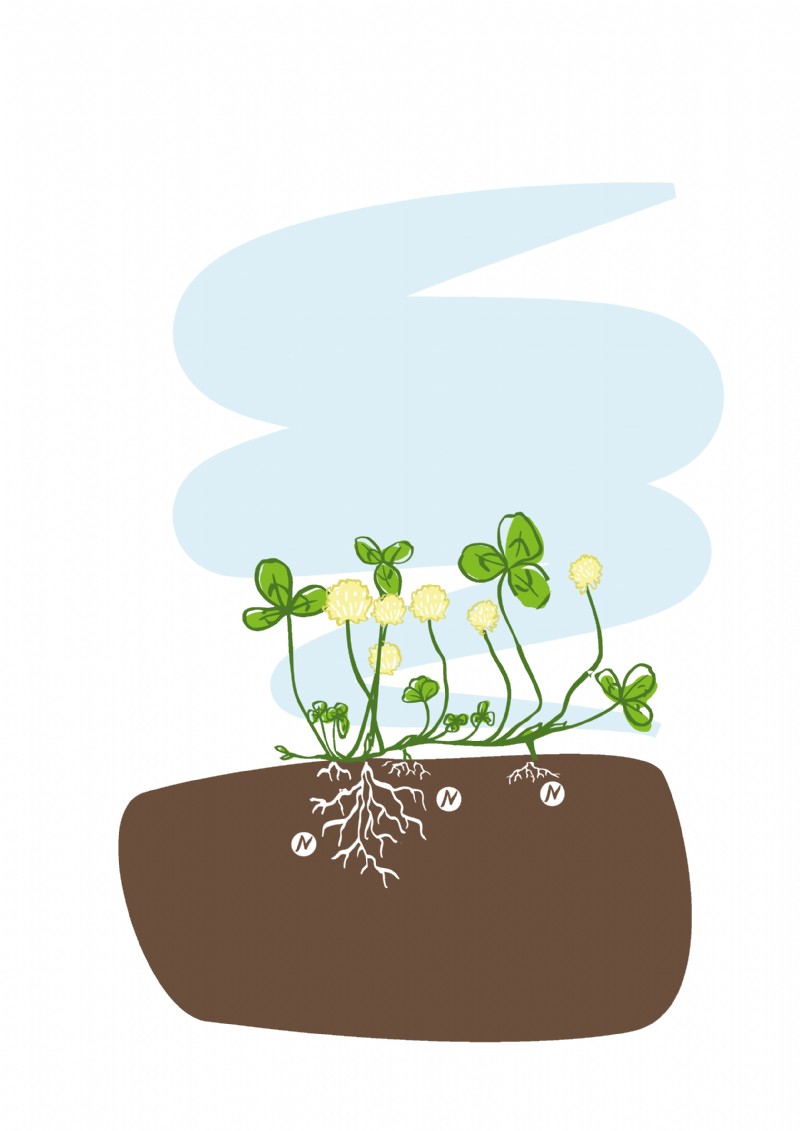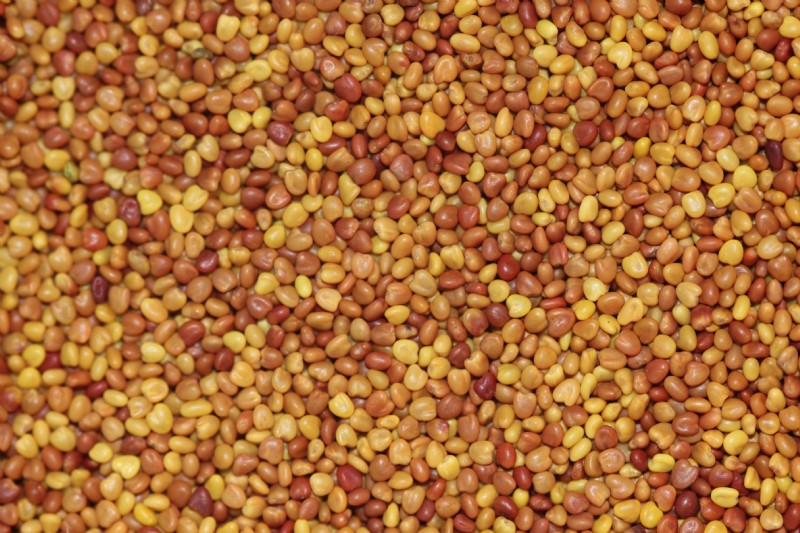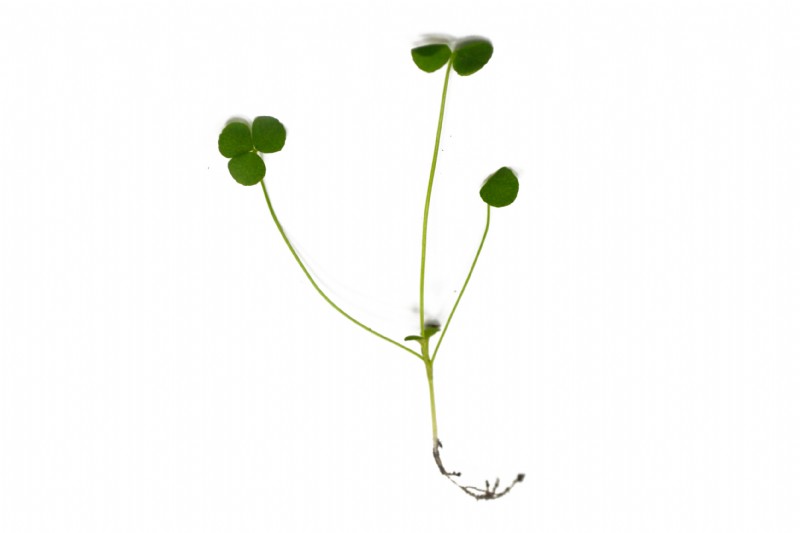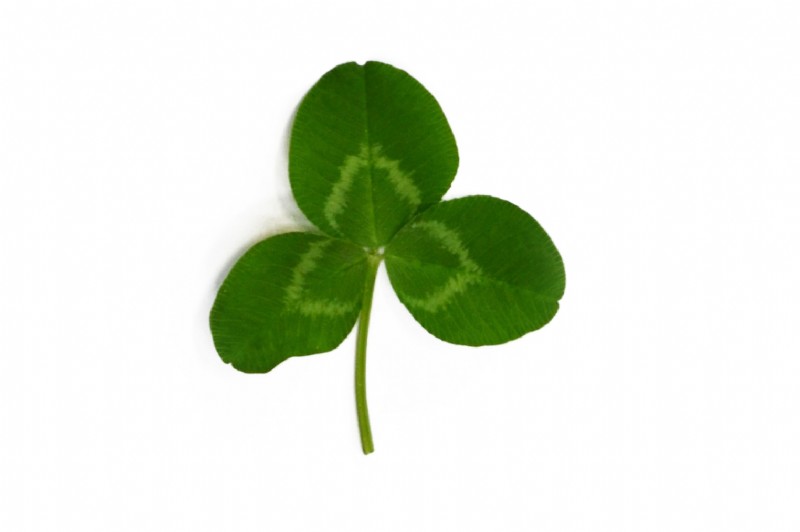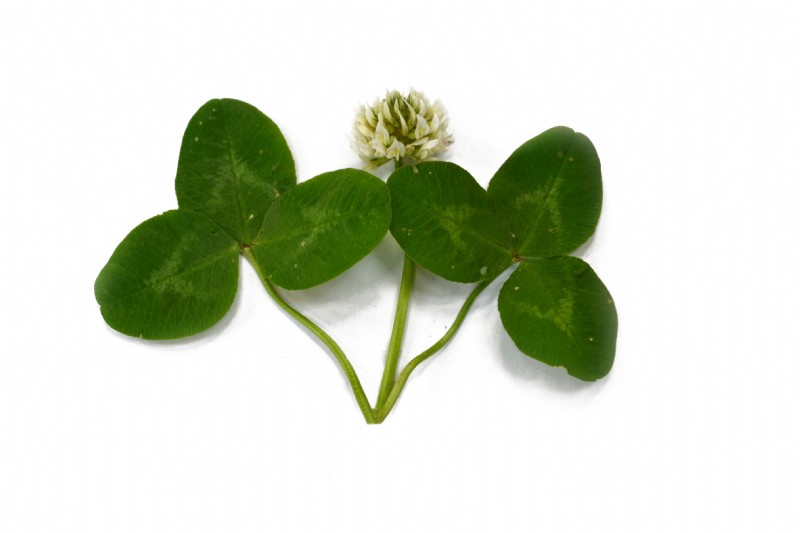Large Leaved White Clover
Clover is one of the most popular legumes in the UK, this species can be recognised by its creeping growth habit. Its creeping stolons help to fill in gaps in the sward, putting down roots at each node. White clover varieties can be categorised into small, medium and large leaf sizes. Generally the smaller the leaf size, the more persistent and prostrate the plant will be, the small leaf type will tolerate closer grazing from sheep and tends to sit lower at the base of the sward, the small and medium leaf varieties are used for grazing mixtures. Using mixtures of white clover varieties helps to ensure that at least one can tolerate and contribute to what ever management regime is being imposed at a given time. The larger leaf varieties are more upright and contribute to yield in cutting swards, but they are less persistent. Common large leaf varieties are Alice & Barblanca.
Uses
Normally used for silage and occasionally hay cutting.
Persistence
Large leaf varieties are perennials, lasting up to 4 years depending on sward management.
Strengths
Good drought resistance and naturally fixes atmospheric nitrogen. A very high protein forage promoting good milk and meat production. Large leaf varieties are more upright for cutting and are the highest yielding.
Frost Tolerance
Good frost tolerance.
Yield
8-9t DM per ha.
Sowing Rate Advice
4kg per acre - 10kg per ha.
A small seed so sowing rates are low.
Mixture Sowing Rate Advice
0.5kg - 1.5kgs per acre - 1.25 - 3.75kgs per ha.
White clover is usually included in grazing mixtures, some mixtures utilise high levels of white clover in a sward to reduce artificial inputs and promote livestock growth and production, especially in organic farming systems.
Ideal Sowing Time
Legumes must be sown in warm soils, from late April to early September.
Management
When clover seed is sown, either as a component of a mixture or a pure stand, the depth of sowing is critical. The seed should be sown no deeper than 10mm, sowing too deeply can reduce the germination and establishment dramatically. Small seeds like clover, prefer a firm seed bed, a loose un-rolled, puffy seedbed can also result in a poor germination. White clover can also been over-sown into an existing grass sward, however guidelines should be followed to get the best result, the competition from the existing sward can reduce the reliability of the over-sowing. In high artificial nitrogen systems, white clover can struggle to persist in the sward.
Distinguishing characteristics
Seed
White clover seed is significantly smaller in size than red clover seed. It is a smooth, small and rounded seed, with a pale yellow to beige colour. It is approximately 1mm in length.
Seedling
White clover seedlings have small, oval shaped cotyledons, they are approximately 3-4mm long by 2-3mm in width, making them slightly longer than they are wide. The seedling and first true leaf is glabrous (free from hair) with a round 1st true leaf, that has a softly serrated margin.
Flowering Plant
The plant is normally a rich green colour.
The leaves are trifoliate, varying from heart shaped to elliptical. Each leaf usually has a lighter green crescent shaped area on the upper side of the leaf, and toothed margins.
The plant is hairless, with small and sharply pointed stipules.
The flower heads are white and produced on the end of a stalk, longer than the leaf stalks.
It has a reasonable taproot and a secondary rooting system, made up of creeping surface stolons.
Additional Info
Average seeds per kg - 1,200,000. Average protein content 25-27%. May cause bloat in some situations particularly in cattle.
Works well with
White clover is very adaptable, it can be used in mixtures with traditional grasses like meadow fescue and Timothy. It also works well in grazing mixtures with leafy perennial ryegrass. Occasionally small leaved, prostrate varieties may be combined with yellow trefoil as an undersowing mixture beneath cereal crops.Buy Large Leaved White Clover Straight 
You can find Large Leaved White Clover in the following mixtures
- White Clover Over-Seeding Dairy Graze or Silage
- Milk-Meat Cut or Graze Five Year Plus Ley
- ‘POCHON’ Dairy Two-Four Year Silage/Grazing Ley
- ‘POCHON’ Dairy Two-Four Year Silage/Grazing 70% ORGANIC
- ‘CHOLDERTON’ Mix Four Year Plus Grazing/Cutting Ley
- ‘CHOLDERTON’ Mix Four Year Plus Grazing/Cutting Ley 70% ORGANIC
- Early Bite Sheep & Hay Ley
- 'HERBAL' Grazing Ley - Four Year Drought Resistant Ley
- Simple Herbal Ley - 4 Year Grazing & Cutting Ley 70% ORGANIC
- Herbal Heavy Land Ley - for Medium and Clay Soil
- Fertility Builder: One-Two Year Mixture
- Simple Herbal Ley - Four year Grazing & Cutting Ley
- ‘Single Cut’ Red Clover Ley Heavy Land Mixture


